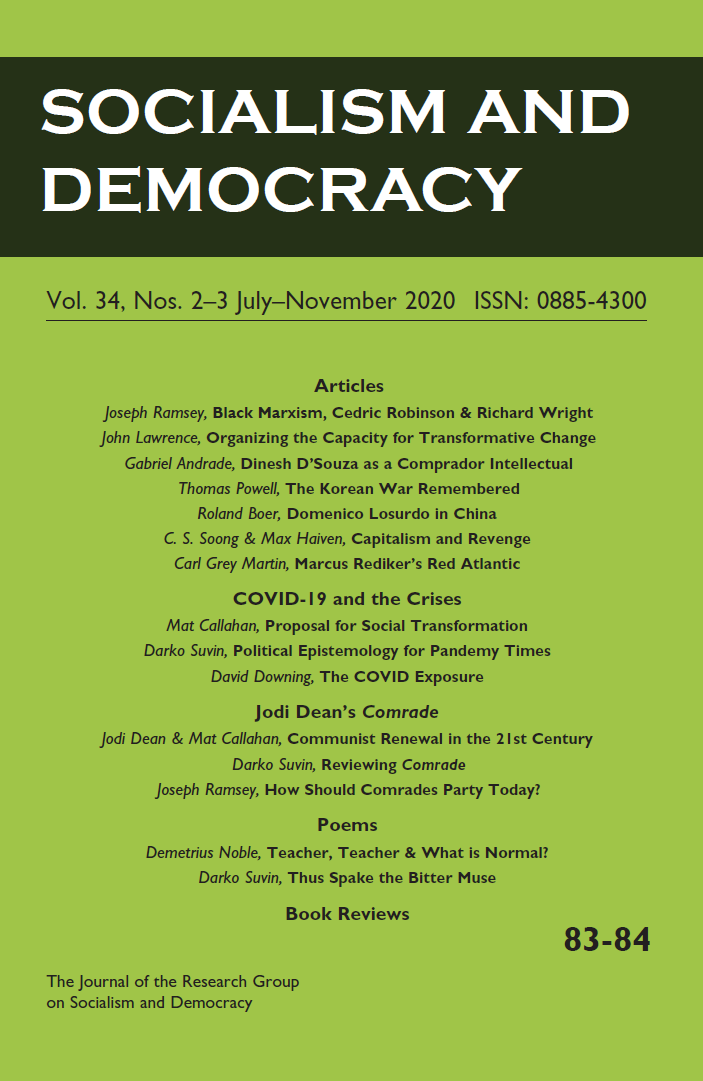Pero Gaglo Dagbovie. Reclaiming the Black Past: The Use and Misuse of African American History in the Twenty-First Century (New York: Verso Books, 2018), 224 pp., $26.95.
Historian Pero Dagbovie explores contemporary evocations of African American history by politicians, entertainers, academics and public historians, taking deep dives into the history behind Black History Month and into the fraught process of official apology. Public understandings of history shape views on state policies, and are susceptible to influences from popular culture, journalism, and political actors themselves. This book is an empirically rich, carefully documented, somewhat undertheorized, almost synchronic exploration of the uses of African American history in the past decade or so.
The first of five substantive and meticulously documented chapters focuses on Barack Obama’s use of African American history in his speeches. Dagbovie argues that Obama evoked history in a way that remained palatable for white audiences, sometimes misrepresenting history and missing opportunities to tie contemporary terror experienced by Black Americans to the history of enslavement and lynching. In one of Obama’s best known speeches, “A More Perfect Union,” given in Philadelphia in March 2008 after his link with the Rev. Jeremiah Wright was revealed, he was careful to satisfy black and white constituents. Not surprisingly, Obama’s use of African American history was shaped by the race and generation of his audiences, and he often heaped praise on the civil rights generation “to the point of hagiography” (66). Among Obama’s eight Black History Month proclamations, detailed in the following chapter, his universalist approach stressed African American agency while stopping short of assigning blame. Otherwise, patterns are elusive. Obama’s “philosophy of black history … vacillated throughout his political career” (36), and Dagbovie can conclude only that Obama’s decisions about how to portray history were conscious ones.
The second chapter is an intriguing “meta” exercise: the history of Black History Month, from its beginnings as Negro History Week in the 1920s, a brainchild of Carter Woodson, founder of the Association for the Study of Negro Life and History, through 2016, when Beyoncé’s spectacular Super Bowl performance kicked off what the media dubbed the “best,” “greatest,” and “blackest” Black History Month ever. In contrast to months designated as commemorative for other groups’ histories, Black History Month has caused in inordinate amount of hand-wringing over the years. Some of the strongest voices against the commemoration were African Americans like S.W. Garlington, managing editor of the Amsterdam News in the 1940s, and the actor Morgan Freeman, who objected to having a distinct month because “Black history is American history.” Conservative voices like the National Review argue that the need for a separate month is past, now that we have reached the age of Obama. Dagbovie locates the best insights in journalist Marguerite Cartwright 1950 essay in which she rhetorically asked if by “abolishing the little toe-hold of recognition” that Black History Month affords, would full incorporation of Black history into American history occur any sooner?
Besides this basic controversy, Dagbovie touches on many intriguing aspects of Black History Month, including its commercial exploitation by Coca-Cola and McDonalds, its metamorphoses into Black Liberation Week in 1970 and into Black Futures Month by the Black Lives Matter movement, and the resentment of Black scholars who are invited to speaking engagements only in February. Missing here is any discussion of the content of celebrations and how it has changed over the years. In 1952, Rebecca Stiles Taylor lamented the lack of knowledge about “historical Negro characters of yesteryears,” pointing to the biographical nature of so much Black History Month commemoration content, a form of history that deserves analysis. Why do famous individuals and the “Black Firsts” dominate the way that African American history is celebrated in Black History Months? How does knowing about famous or accomplished Black individuals serve the universalist approach or reinforce Black History Month as what one critic called “a thriving monument to tokenism” (59)? These are theoretical issues that Dagbovie avoids.
In the third and fourth chapters, Dagbovie studies portrayals of African American history by Hollywood producers and stand-up comedians respectively. He samples a handful of films that were made in a five-year period from “The Help” (2011) through “Race” (2016), omitting many interesting black history centered films, as the author himself admits in a footnote. For Dagbovie, one metric is “teachable moments”; some films lend themselves more than others to helping historians recount Black American experiences to their students and to the general public. In general, the period’s films did a better job portraying the horrors of slavery than they did portraying the struggles of the civil rights movement. Authenticity and accuracy are concerns, with some film-makers distorting history to benefit entertainment -- they “treat the past like a props closet” in Adolph Reed Jr.’s words. But sometimes inaccuracy in one part of the narrative, e.g. the much criticized way Ava DuVernay handled the relationship between Martin Luther King Jr. and President Lyndon B. Johnson, is offset by ground-breaking portrayals in another part, e.g. marginalized Black women in the civil rights movement. Another theme that Dagbovie takes up is the ubiquitous white ally, which was reinforced after the book’s publication when the Academy Award for Best Picture went to “Green Day,” a notorious “white ally” film. The “Mammy” stereotype still finds its way into films of this period, and historical context is often sorely lacking. Finally, the films lack portrayals and understanding of Black culture and community life.
In the discussion on comedy, the problem of sampling is even more difficult. The author chooses about nine comedians for special attention; eight are men. The chapter details many sketches in which a comedian “went too far” and came under fire in the Black community for mocking some aspect of African American history or culture. Again, the predominant color and gender of the audience tend to determine how controversial sketches are received. Ironically, the author predicts that Kevin Hart is a potential successor to the African American comedians highlighted in the text. He is said to practice a kind of “racial neutrality” in his comedy. This was of course before it was revealed that Mr. Hart had written some very homophobic material in the past; it remains to be seen if his reputation will be permanently damaged by these revelations.
The final substantive chapter is an exploration of apologies, beginning with President Bill Clinton’s “Apology for the Study Done in Tuskegee” in 1997. Although no president has ever officially apologized for the US’s role in slavery, the contemporary era that Ashraf Rushdy calls the “guilted age” saw numerous expressions of remorse, posthumous pardons, and reopenings of racially provoked crimes of the past. This chapter especially raises the question: why now? What motivated a wave of eight states to issue apologies or regret for slavery in the years 2007 to 2017? Dagbovie cites political scientist Melissa Nobles as pointing out that apologies can be “pressed into service, providing justification for … state policies” (161). The only substantive policy discussed here is reparations, and Dagbovie shows how each of these “apologies” includes a deliberate clause that the resolution not be used as the basis of any type of litigation, such as the demanding of reparations. Since paying restitution is a key part of a full apology, many of these resolutions fall into the category of “failed” or “pseudo-apologies” (162). Sorry, not sorry.
Told in a narrative, non-chronological way, the analytic power of these chapters would often benefit from a visual presentation, such as a chart showing expressions of apology over time or a timeline of changes in the celebration of Black History Month. These would draw attention to similarities and differences among the numerous examples and allow application of conceptual frameworks about histories of peoples, from theoretical writers like Michel-Ralph Trouillot, Eric Hobsbawm and Raphael Samuel.
The Afterword is a shorter review of the National Museum of African American History and Culture that opened in Washington D.C. in September 2016. Dagbovie recognizes that its success and its scope make it “the most comprehensive, cutting-edge, ultramodern, and awe-inspiring” (197) of its kind. Of course, there are some areas that Dagbovie argues deserve greater attention: ancient African kingdoms from which the enslaved were seized, the violence and horror associated with slavery (this is not, he says, “a black holocaust museum”), slave revolts and freedom fighters. Ironically, Carter Woodson himself is slighted here, but Dagbovie offers no explanation about why, at this point in time, decisions were made to highlight certain areas of Black history and not others. In fact neither Chapter Five nor the Afterword offer real conclusions, except a noncommittal final paragraph which says that African American history “has been interpreted and enlisted by diverse groups of people… for a variety of reasons” (209).
The author, who describes himself as a “hip-hop generation historian of the black past,” uses his knowledge of hip-hop throughout the book, but only obliquely analyzes the uses of history in hip-hop in his discussion of Obama’s engagement with hip-hop artists. I am curious about the ways that hip-hop over the years has dealt with key aspects of African American history. Dagbovie seems to know, but isn’t saying.
Anita M. Waters
Professor Emerita, Denison University
waters@denison.edu

